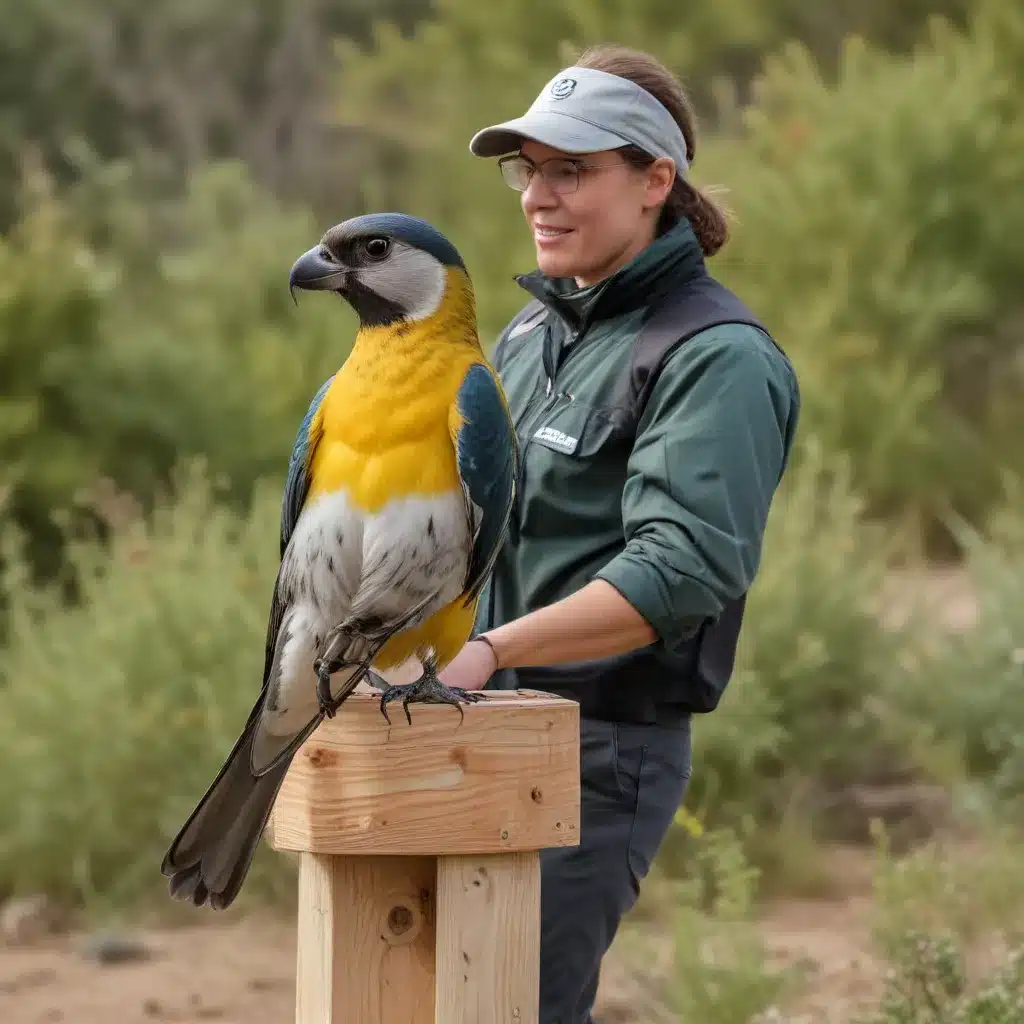
Avian Ambassadors: Educating Guests and Visitors on Bird-Safe Practices
As an experienced avian caretaker, I’m thrilled to share my expertise on protecting our feathered friends and fostering bird-friendly environments. At Mika Birds Farm, we’re passionate about safeguarding native bird populations, mitigating threats to endangered species, and empowering visitors to create backyard sanctuaries for our avian neighbors.
Avian Species Profiles
Native Bird Populations
Our local ecosystems are teeming with diverse bird life, from the vibrant ruby-throated hummingbirds that dart between flowering plants to the majestic bald eagles soaring overhead. These native species are vital to the health and balance of our natural world, playing crucial roles as pollinators, seed dispersers, and natural pest control. Yet, many of these populations face ongoing threats due to habitat loss, window collisions, and other human-caused dangers.
Migratory Bird Patterns
Each year, millions of songbirds embark on remarkable migratory journeys, traveling thousands of miles between their breeding grounds in North America and overwintering sites in Latin America and the Caribbean. These avian ambassadors connect ecosystems across the Western Hemisphere, bringing vibrant color and song to our backyards during the spring and fall. However, these perilous migrations put them at risk, with threats ranging from light pollution to deadly window strikes.
Endangered Bird Species
Tragically, some of our most iconic bird species, such as the whooping crane and the ivory-billed woodpecker, have dwindled to the brink of extinction. Habitat fragmentation, invasive species, and other human-driven factors have devastated populations, underscoring the urgent need for conservation efforts. As caretakers of these precious avian resources, we must take action to protect and restore their fragile habitats.
Bird-Friendly Habitats
Landscaping for Birds
One of the most impactful ways to support our feathered friends is by creating bird-friendly landscapes. Incorporating native plants that provide food, shelter, and nesting sites can transform even the smallest urban or suburban yards into oases for diverse bird species. By strategically selecting berry-producing shrubs, nectar-rich flowers, and dense evergreen cover, we can cultivate thriving ecosystems that meet the needs of both resident and migratory birds.
Backyard Bird Sanctuaries
Beyond individual landscapes, larger-scale backyard bird sanctuaries can serve as vital refuges for our avian neighbors. These protected areas, often managed by conservation organizations or dedicated community groups, provide safe havens for birds to rest, feed, and breed, free from the threats of urbanization and habitat loss. By supporting and volunteering with such initiatives, we can ensure that our local bird populations have the resources they need to thrive.
Wildlife Corridors
In addition to localized sanctuaries, establishing interconnected wildlife corridors is crucial for maintaining healthy bird populations. These pathways of protected habitat allow birds and other wildlife to move safely between larger natural areas, facilitating gene flow and supporting the resilience of ecosystems. By advocating for the preservation and restoration of these vital corridors, we can help migratory birds complete their journeys and ensure the long-term viability of our avian communities.
Bird-Safe Design Strategies
Architectural Features
As we continue to expand our built environments, incorporating bird-safe design features into new construction and retrofitting existing structures is essential. Simple architectural elements, such as angled glass, fritted patterns, and external screens, can significantly reduce the risk of deadly window collisions, which claim the lives of over a billion birds each year in North America alone. By prioritizing bird-friendly design, we can create spaces that coexist harmoniously with our avian neighbors.
Window Treatments
In addition to architectural modifications, the thoughtful application of window treatments can also make a big difference in preventing bird strikes. Strategically placed window decals, decorative films, or hanging deterrents can alert birds to the presence of glass, guiding them safely around obstacles. These simple and cost-effective solutions can be easily implemented in both residential and commercial settings, making a tangible impact on local bird populations.
Lighting Considerations
Another critical factor in creating bird-safe environments is the management of artificial lighting. Bright, unshielded lights can disorient and attract migrating birds, leading them astray from their intended paths and increasing their vulnerability to collisions. By adopting practices such as motion sensors, downward-facing fixtures, and minimizing unnecessary nighttime illumination, we can significantly reduce the impact of light pollution on our feathered friends.
Visitor Education Initiatives
Interpretive Signage
At Mika Birds Farm, we believe that empowering our guests and visitors is essential to promoting bird conservation. One effective way we engage our community is through the use of interpretive signage, which highlights the importance of our avian ambassadors, the threats they face, and the actionable steps visitors can take to support them. These educational displays foster a deeper understanding and appreciation for the diversity of bird life, inspiring our guests to become active stewards of the natural world.
Interactive Exhibits
In addition to static signage, we also incorporate interactive exhibits that allow visitors to explore the fascinating adaptations and behaviors of birds. From touchable feather displays to virtual reality simulations of migratory journeys, these engaging experiences immerse our guests in the lives of our feathered friends, cultivating a personal connection that motivates them to protect these remarkable creatures.
Guided Bird Walks
Another valuable initiative we offer at Mika Birds Farm is our guided bird walks, led by our expert avian caretakers. These outings provide visitors with the opportunity to observe birds in their natural habitats, learning to identify species, understand their ecological roles, and appreciate the wonder of their existence. By fostering this direct connection with the local avifauna, we inspire our guests to become active stewards, advocating for bird-friendly practices in their own communities.
As an experienced avian caretaker, I’m honored to share my passion for protecting our feathered friends with the Mika Birds Farm community. By raising awareness about the threats facing native and migratory bird populations, empowering visitors to create bird-friendly habitats, and implementing cutting-edge design strategies, we can ensure that our avian ambassadors continue to thrive for generations to come. Together, let’s Mika Birds Farm work to safeguard the health and vitality of our shared avian ecosystems.


